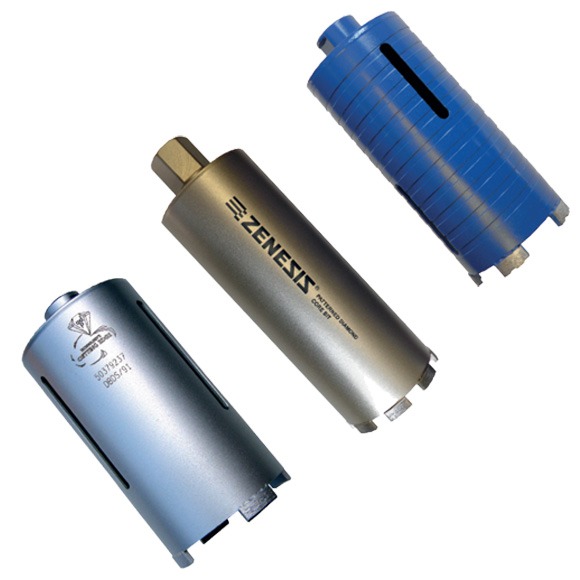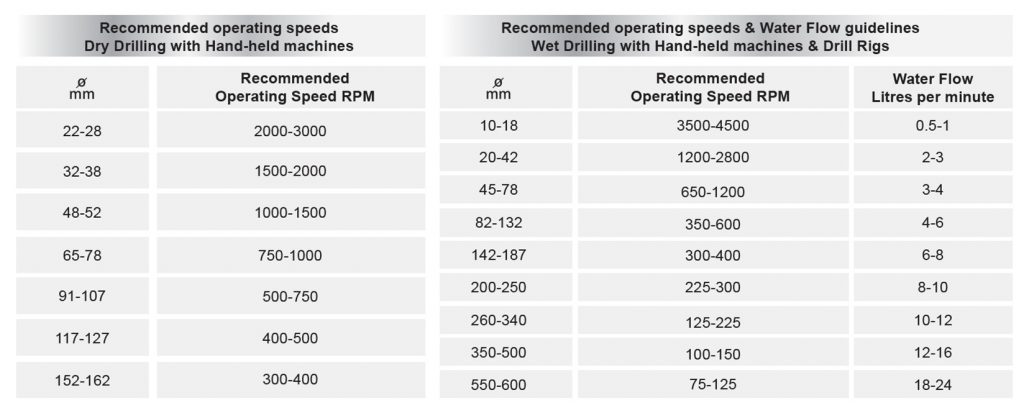Operational Advice: Diamond Core Bits
- Check that the core bit specification is suitable for the material to be drilled.
- Check that the core bit has no excessive play when fitted to drive shaft or adaptors.
- Check correct / recommended operating speed for the diameter of core bit to be used, (refer to the chart below).
- If using a drilling rig, ensure it is anchored firmly and that there is no excessive play in the motor carriage.
- When fitting a part worn core bit, check that the barrel is in good condition, with no cracks and minimal dents.
- If the core bit slows excessively whilst in use, check the following:
A: Rotation speed may be too fast for the material being drilled, reduce speed.
B: If wet drilling, check water flow rate, too much water can be as detrimental as too little, to the drilling performance.
C: Having established the optimum operating speed and water flow rate, if the core bit is still very slow, it may be glazed, in which case you may have to redress the segments in an abrasive material. - When dry drilling, do not force the core bit, as this will cause the segments to overheat and glaze, and may result in damage to the core bit and machine. As a general rule, drill as fast as the core bit and motor will allow without undue pressure.


The above tables are a guide to the recommended operating speeds, for the various core bit diameters, and not necessarily the optimal operating speed, as this will depend on the hardness or the abrasiveness, of the material to be drilled.
Note:
- The larger the diameter or the harder the material, the lower the speed.
- The smaller the diameter or the softer the material, the higher the speed.
